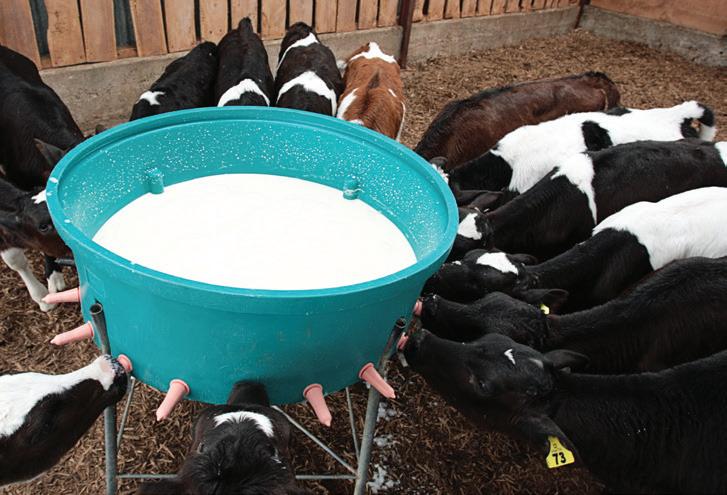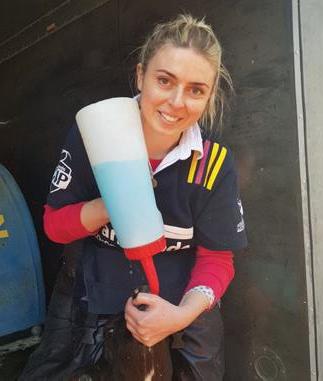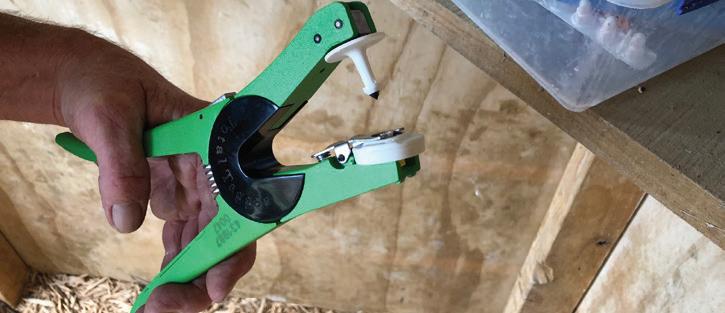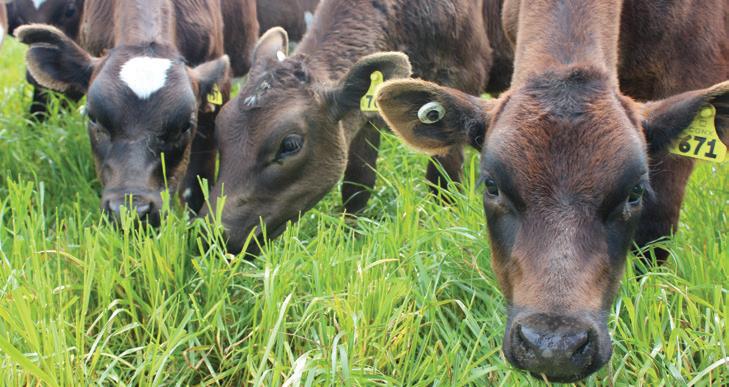Milk feeding Top tips for milk feeding •
Ensure calves have received adequate colostrum in the first 4 days of life (see colostrum section).
•
Whether you use whole milk or milk prepared from calf milk replacer, calves will grow better when fed milk at a temperature of around 38-40°C. Calves don’t thrive as well when fed cold milk, as cold milk requires more energy to digest compared to warm milk.
•
Milk should be fed warm but not too hot. At temperatures above 70°C, proteins in the milk may become denatured and vitamins destroyed. Hot milk can also cause calf discomfort.
•
Ensure smaller calves get their fair share, watch out for bullying and ideally group slow drinkers together.
•
Handle calves quietly and have a consistent routine, so that calves are more relaxed at feeding time.
•
Avoid overfeeding as this can cause nutritional scours (see scours section).
•
Ensure you have a stable supply of milk or calf milk replacer, so that the diet is consistent. Any changes must be gradual to avoid digestive upset. The gold standard for changing between calf milk supply (e.g. between different milk replacers or from fresh milk to calf milk replacer or vice versa) is to mix the old and the new milk at 50:50 for 3 days before moving fully onto the new feed.
•
Take care when preparing liquid milk. Ensure milk is mixed to the correct concentration and is mixing evenly. Milk that is too high in concentration may induce nutritional scours and milk that is too weak in concentration may be mistaken as water by the calf and therefore directed to the rumen rather than the abomasum, causing scouring and bloat (see calf milk replacer preparation section).
•
Ensure all equipment used for feeding is cleaned regularly. Dirty equipment causes a build up of pathogens which can cause calf health issues.
Milk options Calf milk replacer: It is essential that milk powder provided to calves is good quality. Milk powders should contain ingredients that have been selected for digestibility, solubility and stability for easy mixing in warm water and optimum digestion by the calf. Most importantly, the milk replacer must be palatable and meet all of the nutritional requirements for a calf. Calf milk replacers can have benefits over using whole milk from the vat, as they include a range of additives lacking in whole milk, such as a coccidiostat (not in all calf milk replacers), plus vitamins and minerals, which can be present in whole milk at lower concentrations than are recommended for growing calves. They can also be more economical than taking milk from the vat and more consistent in relation to fat and protein content. For more information on different milk replacer options, see pages 33-35.
30 | FARMLANDS CALF REARING GUIDE













